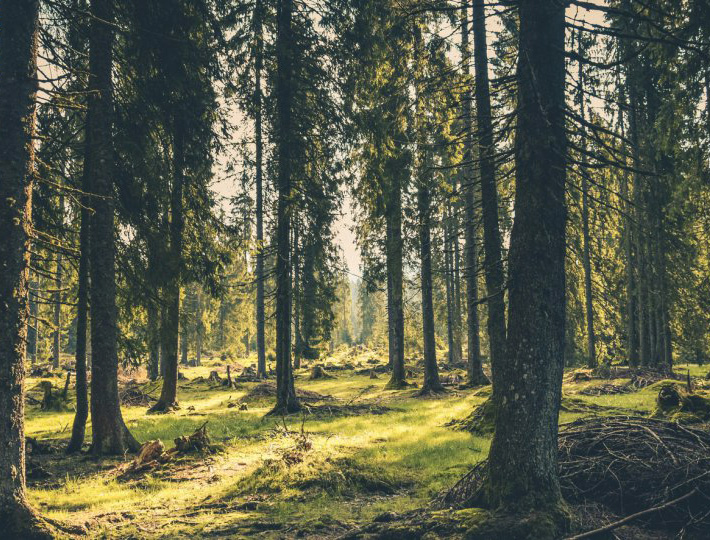

As we approach 2019 there is much discussion around the environmental implications of almost everything that we as humans are consuming. And rightly so! While wood has long been considered an environmentally friendly resource, more and more focus is being placed on the recycling and renewability aspects of wood products, as well as the use of certified forest land.
From an environmental point of view, one of the biggest arguments in favour of wood is that it takes significantly less energy to produce, compared to concrete, steel, cement, or glass.
So, what are the environmental considerations when it comes to wood veneer when compared to hardwood?
The good news is that veneer is not only a better value than hardwood financially, it is better for the environment too and here are 3 reasons why.
1. The method of processing - Keeping the dust down!
When boards are made, they are cut by a fast-moving saw blade. The end product of this process is not only the one-inch thick board, but a large amount of saw dust (the amount of dust varies, depending on the width of the blade) for the entire length of the board. It’s amazing how quickly that dust can add up! Wood veneer is sliced in a process that produces no dust and, therefore, produces significantly less waste.
2. Trees need Replacing less frequently- A low warp factor!
Something else to consider is that hardwood has a tendency to warp over time. This means that wood will need to be replaced by new wood. Wood veneer attached to a solid base doesn’t have the same warping problems that hardwood does. Though the base itself is often made of plywood, the trees used to make plywood grow at a much faster rate than the hardwoods, and can therefore be harvested and replenished more efficiently.
3. Veneer uses every part of the tree – No waste
It is also worth noting that up to 42 surfaces of veneer can be made for every surface of inch thick board. Wood veneer can also make use of tree sections that boards cannot (such as burls and crotches) because veneer will not have to support weight. When it comes to rare and exotic wood, veneer is by far the more eco-friendly choice.
Manorbloc wood briquettes
As part of our sustainability ethos at Merenda, we developed and produce our Manorbloc product. Manorbloc are recycled wood briquettes made from the by-product (waste) of Merenda Ltd. The advantages of the Manorbloc wood briquettes are that they have a lower ash and/or sulphur content, compared to most other fossil fuels. The carbon dioxide (CO2) balance is even, because wood briquettes release just as much CO2 to the atmosphere as the tree absorbs through growth by photosynthesis. Manorbloc is a very clean and eco-friendly product that has no sealing agents or glue. It has a moisture content of 6%, burns at an intense heat leaving a very low ash residue and is a clean home-friendly product.